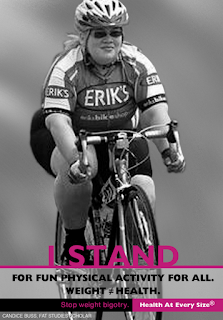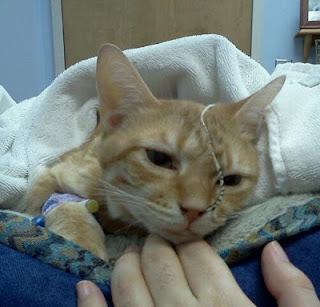 |
| My STANDard poster |
Since some of my scholarly work is in sociology of the body & sociology of physical activity, my work frequently discusses fatness. So, I'm reposting this CFP for the
Popular Culture Association & America Culture Association conference to put the word out for any interested folks:
-------------------------------
(please circulate far & wide)
PCA/ACA Fat Studies 2013 Call for Papers
Fat Studies is becoming an interdisciplinary, cross-disciplinary field of study that confronts and critiques cultural constraints against notions of “fatness” and “the fat body”; explores fat bodies as they live in, are shaped by, and remake the world; and creates paradigms for the development of fat acceptance or celebration within mass culture. Fat Studies uses body size as the starting part for a wide-ranging theorization and explication of how societies and cultures, past and present, have conceptualized all bodies and the political/cultural meanings ascribed to every body. Fat Studies reminds us that all bodies are inscribed with the fears and hopes of the particular culture they reside in, and these emotions often are mislabeled as objective “facts” of health and biology. More importantly, perhaps, Fat Studies insists on the recognition that fat identity can be as fundamental and world-shaping as other identity constructs analyzed within the academy and represented in media.
Please join us in Washington, DC from March 27-30, 2013 for the PCA/ACA National Conference at the Washington Marriott in Wardman Park. Presenters must become members of the Popular Culture Association. Find more information on the conference and organization at
http://pcaaca.org/conference/national.php.
The deadline for online submission of presentations is November 30, 2012. Please do not email your abstract to either of the Fat Studies Area Chairs; we will only accept submissions entered into the PCA/ACA online database. You can find instructions here:
http://pcaaca.org/areas/areas.php. In short, under “Fat Studies,” enter the name of your presentation, an abstract, and a short bio. We welcome papers and performances from academics, researchers, intellectuals, activists, and artists, in any field of study, and at any stage in their career.
All submissions are welcome, but please use the information above to ensure your proposal fits within the academic and political scopes of Fat Studies. Please also be mindful that Fat Studies is a political project and not merely an umbrella term for all discussions of larger bodies. Also, we encourage submitters to rethink using words like “obesity” and “overweight” in their presentations unless they are used ironically, within quotes, or accompanied by a political analysis.
Topics may include but are not limited to:
• representations of fat people in literature, film, music, nonfiction, and the visual arts
• cross-cultural or global constructions of fatness and fat bodies
• cultural, historical, inter/intrapersonal, or philosophical meanings of fat and fat bodies
• the geography and lived experience of fatness and fat bodies
• portrayals of fat individuals and groups in news, media, magazines
• fatness as a social or political identity
• fat acceptance, activism, and/or pride movements and tactics
• approaches to fat and body image in philosophy, psychology, religion, sociology
• fat children in literature, media, and/or pedagogy
• fat as it intersects with race, ethnicity, class, religion, ability, gender, and/or sexuality
• history and/or critique of diet books and scams
• functions of fatphobia or fat oppression in economic and political systems
Special Topic Session: For the 2013 Conference, we are inviting proposals for papers and performances for a joint session (1 to 2 panels) with the Fashion, Style, Appearance, Consumption & Design and Fat Studies areas. Possible topics include the intersections between body size, shape, and weight and one’s experiences as a fashion consumer, the ways fashion as an industry shapes the discourse around weight (“plus-size,” “women’s”, “husky,” “King-Size”, and “Big and Tall”) and fashion as a space for reclaiming the fat body through accentuating and adorning it (fatshion). Other topics could include the study of sales and the financial success of the plus-size, women’s, King-Size, husky, and Big and Tall market that have spawned a whole array of specialty stores dedicated to these consumers. Also the influence of fashion design and the evolution of the types of garments manufactured for these consumers to wear could also be suggested. Submit your online proposal for this Joint Session only one time to either the Fashion Area or the Fat Studies Area.
If you have any questions, please feel free to contact one or both Fat Studies Co-Chairs:
* Julia McCrossin (jmccross@gwmail.gwu.edu)
* Lesleigh Owen (lesleigh.owen@gmail.com).
We look forward to hearing from you!












